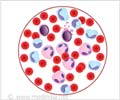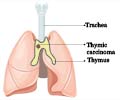Radiation Therapy Treatment of Non Hodgkins Lymphoma (NHL)
II. Radiation Therapy
Using radiotherapy to treat non-Hodgkin's lymphoma depends on the type and stage of the disease, and on the overall health status of the individual. Radiotherapy employs high-energy, ionizing radiation to eliminate malignant cells. It can, however, prevent normal growth and development in children.
a) Total Nodal Irradiation
Total nodal irradiation, also known as Total Lymphoid Irradiation (TLI), involves irradiating the lymphatic tissues in the entire body. This method of treatment is applicable for patients with widespread, late-stage lymphoma but not for patients who suffer from early-stage, slow-growing lymphomas.
b) Total Body Irradiation (TBI)
Total Body Irradiation (TBI) is often carried out on patients to prepare them for high-dose chemotherapy followed by stem cell transplantation. This radiation allows new transplanted cells to grow by killing the old malignant ones. The radiation therapy also helps to prevent the rejection of the grafted stem cells
Side Effects of Radiotherapy includes the following-
- Dryness of mouth
- Inflammation of throat
- Nausea
- Vomiting
- Diarrhoea
- Inflammation of the abdominal cavity lining (peritoneum)
- Reduction of blood cells
- Obstruction of the small bowel
- Edema
- Darkening of skin
- Skin Irritation
- Inflammation of the heart covering (pericardium)
- Lung Inflammation
- Spinal cord inflammation
- Thyroid abnormalities
- Loss of appetite














I am a new nonhodgkins lymphoma stage 2 patient. I would love to visit with others that are in the processs of treatment. Carol
Hi , my father is corrrectly being diagnosed with NHL case of stage III. He has large B cell type lymphoma , with swelling in neck area. He is receiving his 4th chemotherapy , and is fit from exterior. How many chemo shots youhave undertaken. Can you please share your experience ?
I was not aware that the NHL can arise in the brain. I thought that the brain area was a priviledged site, an area that is in no contact with our immune system [blood and lymphatics]. Please explain further.
Frequent use of phenoxyacetic acid herbicides, in particular, 2,4-dichlorophenoxyacetic acid, has been associated with 2- to 8-fold increases of NHL in studies conducted in Sweden, Kansas, Nebraska, Canada, and elsewhere.